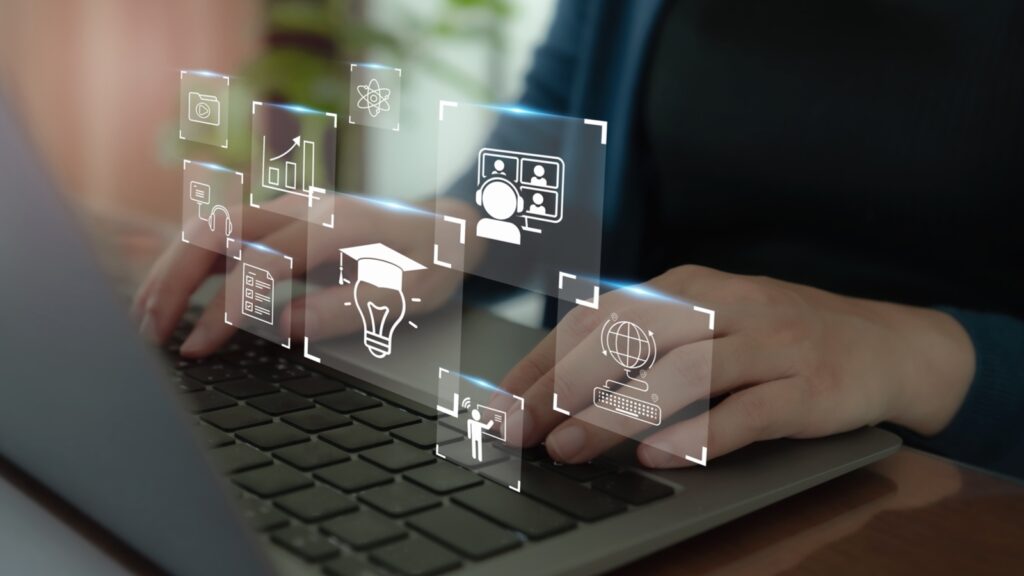How to Improve Academic Performance of Weak Students? Every student learns differently, and some may face challenges that hinder their academic progress. This doesn’t mean they’re incapable! By shifting our focus to areas of opportunity and providing targeted support, educators can significantly improve student performance.
Forget labels like “weak” – instead, let’s focus on identifying areas of opportunity. By understanding a student’s unique learning style and needs, we can create a personalized approach to improve their academic performance.
So, how can we help students who seem to be struggling? Here at Heritage Girls School, we believe in fostering a supportive learning environment where every child can thrive. This blog post will explore various strategies to empower struggling students and unlock their capacity for success. Stay tuned for actionable tips and tricks to transform challenges into opportunities for growth!
What is Teaching Strategy
Imagine a toolbox overflowing with various tools, each designed for a specific purpose. Teaching strategies work just like that! They’re a teacher’s toolkit, packed with methods to engage students and make learning exciting.
Checkout our blog: 7 Importance Of Sports In Student’s Life
Teaching strategies are your personalized lesson plans. They combine different methods to engage students, cater to diverse learning styles, and ultimately, solidify understanding.
Why are strategies important? Because a one-size-fits-all approach simply doesn’t work. By incorporating discussions, activities, and visual aids, you create a dynamic learning environment that keeps students motivated and fosters deeper comprehension.
10 Tips on How to Improve Academic Performance of Weak Students
-
Identify why exactly the students need help
In order to effectively support students, it is essential for teachers to first identify and assess their individual areas of struggle. By gaining a deeper understanding of both their weaknesses and strengths, educators can tailor their assistance more effectively. Various factors can contribute to poor academic performance, such as:
– Stress and concerns within the student’s home environment
– Limited access to study materials
– Lack of support for their learning needs
– Medical issues impacting their abilities
By evaluating students for such underlying issues, teachers can provide targeted and meaningful support. This proactive approach enables educators to address the root causes of academic challenges and offer appropriate assistance to help students succeed.

-
Provide encouragement
When supporting academically struggling students, it’s common to resort to criticism. However, this approach can have a detrimental effect, leading to demotivation and disengagement. To uplift students, it is crucial to offer gentle encouragement instead of harsh criticism. By bolstering their self-esteem, students are more likely to feel comfortable approaching you with questions and concerns. This positive reinforcement fosters a supportive learning environment that motivates students to strive for improvement.
-
One on One Personalized Tutoring
Struggling students often benefit greatly from personalized academic support tailored to their specific needs. Individualized attention allows tutors to adapt teaching methods to address learning gaps and cater to each student’s unique challenges. By providing customized explanations and relatable examples, tutors help students grasp difficult concepts more effectively. One-on-one tutoring not only offers a personalized learning experience but also cultivates a sense of accountability and motivation. Students receiving focused support feel more encouraged to overcome academic challenges and are empowered to succeed. This personalized approach fosters a supportive environment where students can thrive academically. With dedicated guidance, even those facing difficulties can gain confidence and make significant progress in their learning journey.
-
Engage them in multiple ways
Understanding that each child is unique and may respond differently to various teaching methods is crucial for educators. By embracing a diverse range of teaching strategies, visuals, and aids, teachers can effectively engage students with different learning preferences. A modern teacher training program can equip educators with the skills and resources needed to enhance their teaching practices. These programs offer valuable insights on classroom management, communication techniques, and fostering a positive learning environment.
Teacher training programs play a vital role in helping teachers adapt to the individual needs of their students and create engaging learning experiences. By continuously improving their skills through professional development opportunities, educators can ensure that they are better equipped to meet the diverse learning needs of all students. Embracing modern pedagogy strategies empowers teachers to create inclusive and effective learning environments that cater to the unique needs of each student.
-
Provide constructive feedback
Constructive criticism plays a vital role in enhancing a student’s overall performance. While positive feedback boosts motivation, constructive feedback is equally essential in highlighting areas for improvement. Teachers must communicate feedback effectively by offering specific examples and actionable steps for students to enhance their understanding and performance. Constructive feedback should be clear and informative without shying away from addressing areas needing improvement. By striking a balance between praise and constructive criticism, educators can empower students to strive for continuous growth and development.
-
Recognize students’ efforts
Encouraging students by recognizing and rewarding their efforts is a powerful motivator, especially for those who may be underperforming. Praise in public and provide constructive feedback in private to boost self-esteem. Remember, acknowledgment drives hard work. Optimize your approach to inspire students to reach their full potential. Foster a supportive environment that celebrates achievements and encourages growth.
-
Use Varied Teaching Strategies
When developing a plan to support students who learn at a slower pace, it’s crucial to recognize that traditional teaching methods may not always be effective for everyone. By incorporating various strategies like group activities, visual aids, and real-life examples, educators can accommodate different learning preferences and make lessons more engaging. Interactive activities play a key role in enhancing the learning journey for slow learners, fostering active participation and collaboration. Group discussions, debates, and role-playing exercises are examples of activities that can boost critical thinking and communication skills. These approaches not only help students grasp concepts better but also create a supportive learning environment. By tailoring teaching methods to meet individual needs, educators can empower all students to succeed.
Checkout our blog: Positive and Negative Effects of AI on Boarding School Students
-
Involve the parents
In the journey of a child’s education, collaboration between parents and teachers is key. It’s vital to engage parents by keeping them informed about their child’s progress and involving them in educational plans. By sharing concerns, strategies, and ways they can support their child, a strong support system is created. This partnership ensures the child receives comprehensive assistance, easing the burden on teachers. Effective communication and involvement empower parents to contribute to their child’s growth, whether through homework guidance or exam preparation. Together, parents and teachers create a nurturing environment that fosters a child’s overall development.
-
Use appropriate technologies and tools
In today’s education landscape, personalized learning through Artificial Intelligence is a widely embraced concept. AI enables students to receive customized learning experiences tailored to their individual strengths and areas for improvement, particularly benefiting those who may struggle academically. By adapting to each student’s knowledge level, learning pace, and educational objectives, AI tools can analyze past learning behavior, identify mistakes, and suggest lessons that align with their growth trajectory.

An innovative technology tool in this realm is the Tara English Language Lab (TELL), an AI-driven voice assistant teacher designed to enhance learners’ English communication skills. Through Tara, students can progress at their own speed, enhancing information retention and boosting confidence in language proficiency. This personalized approach fosters effective learning outcomes and empowers students to achieve their language learning goals successfully.
How Can Technology Improve Academic Performance?
Leveraging technology in education can significantly enhance academic performance. By utilizing student management and analytics software, educators can gain valuable insights into each student’s progress. These tools enable teachers to identify areas where students may require additional support, helping tailor their learning experience. Student management software streamlines tasks like tracking attendance, assignments, and grades, simplifying the monitoring process. The benefits of incorporating technology in education are numerous, offering a more efficient and personalized approach to learning. By embracing these tools, schools can empower students to reach their full potential and enhance their overall academic performance..
-
Performance Evaluation
Student management tools play a crucial role in evaluating and improving student performance.
These tools enable teachers to conduct timely assessments of individual students and address any challenges they may be facing promptly. By utilizing these reports, educators can pinpoint specific areas where students may need additional support and adjust their teaching methods accordingly. This not only helps in identifying weaknesses but also in enhancing the overall learning experience for students.
With the aid of student management tools, teachers can track progress, provide targeted assistance, and ensure that each student receives the necessary support to succeed. By leveraging these tools effectively, educators can create a more personalized and effective learning environment that fosters student growth and development.
-
Make Data-Driven Decisions
Utilizing student management software empowers teachers to make informed decisions based on data analysis. By tracking and evaluating student performance, educators can pinpoint trends affecting learning outcomes. This data-driven approach enables personalized interventions, support programs, and teaching methodologies. This strategic use of information ensures tailored solutions for each student’s unique needs. The result is improved academic outcomes and a more effective learning environment.
-
Seamless Collaboration
Student management tools often include communication features that provide real-time updates on a student’s progress. These tools allow teachers to easily update grades and share feedback with parents and students, ensuring everyone stays informed. Online discussion boards and live chat options within the software also facilitate direct communication between parents and teachers, addressing any concerns or questions about the student’s academic performance. This streamlined approach fosters collaboration and ensures that all parties are on the same page.
-
Long-Term Progress Tracking
Student management software offers a modern approach to assessing student progress beyond just grades and homework. By setting long-term goals and tracking student development, educators gain valuable insights into individual growth. This data helps identify areas for improvement and potential obstacles to success that may go unnoticed with traditional assessments alone. Monitoring long-term progress empowers teachers to tailor their teaching methods to meet each student’s unique needs effectively. This personalized approach enhances learning outcomes and fosters student success.
-
Timely Intervention
One of the main advantages of using student management software is the ability to continuously monitor and analyze student data in real-time. This tool enables teachers to closely track each student’s progress, pinpoint areas of difficulty, and provide timely interventions tailored to their needs. By utilizing this software, educators can easily spot trends in student performance and behavior that may impact their learning outcomes. For instance, a student consistently scoring low on quizzes but actively participating in class discussions may indicate a need for support in test-taking skills rather than subject understanding.
-
Saves Time and Money
Opting for digital student management tools is not just a time-saver but also an eco-friendly choice for educational institutions amid growing environmental concerns. By transitioning from manual record-keeping to digital systems, schools and universities can save resources like paper, storage space, and employee efforts. These saved resources can then be utilized to enhance the overall educational experience and boost the quality of learning. Embracing sustainable practices not only benefits the environment but also streamlines operations for better efficiency and effectiveness.

Real-Life Examples of Strategies to Improve the Academic Performance of Students
Example 1: Ahmad, a student with attention deficit issues, found it challenging to focus during regular classroom lectures. His teacher implemented a strategy of breaking down lessons into shorter segments with interactive activities in between. Additionally, Ahmad was provided with noise-canceling headphones to minimize distractions. With these adjustments, Ahmad’s concentration improved, leading to better understanding of the subject matter and an increase in his grades.
Example 2: Maria, a high school student, struggled with organization and time management skills, often missing deadlines and forgetting important assignments. Her school counselor introduced her to the use of a planner and taught her how to prioritize tasks. Through regular check-ins and guidance on effective study habits, Maria learned to manage her time efficiently. Consequently, her grades improved as she was able to submit assignments on time and prepare thoroughly for exams.
Example 3: Jason, a ninth-grade student, lacked confidence in his writing skills, which reflected in his grades. His English teacher initiated a peer mentoring program where advanced students provided constructive feedback on Jason’s essays. Through collaborative writing sessions and one-on-one guidance from his peers, Jason gradually improved his writing abilities. With increased confidence in his writing, Jason’s grades in English class showed significant improvement.
Example 4: Sarah, a student from a low-income family, faced numerous challenges outside of school that affected her academic performance. The school implemented a mentorship program where Sarah was paired with a supportive adult mentor who provided guidance and encouragement. The mentor also helped Sarah access resources such as tutoring services and scholarships. With the additional support and resources, Sarah’s grades improved as she gained confidence and motivation to excel academically.
Example 5: David, a student with dyslexia, struggled with reading comprehension and writing tasks. His school provided him with assistive technology tools such as text-to-speech software and speech recognition software. These tools helped David overcome his challenges by providing alternative ways to access and process information. As a result, his comprehension improved, leading to higher grades in his language arts classes.
Final Thoughts
Improving the academic performance of struggling students is a critical focus for educators as disparities in achievement levels persist. Teachers encounter various challenges in meeting the diverse learning needs of students, motivating them, and integrating technology effectively. To address these issues, strategies such as personalized tutoring, regular assessments, fostering a growth mindset, and providing constructive feedback are essential. Employing diverse teaching methods like group activities and interactive exercises can effectively engage students who learn at a slower pace.
Collaboration with parents and guardians plays a vital role in developing a comprehensive action plan for students. Utilizing student management software can streamline progress tracking, communication, and data-driven decision-making. This software offers numerous benefits including performance evaluation, timely interventions, resource savings, and long-term progress monitoring.
In conclusion, by implementing targeted strategies, leveraging technology, and fostering collaboration, educators can enhance the academic performance of weaker students and support them in achieving their full potential.
The most powerful strategies to improve weaker students FAQs
1. What is the most effective way to support weaker students?
Supporting weaker students effectively involves tailored strategies like differentiated instruction, targeted interventions, and consistent progress tracking. By personalizing support and providing regular feedback, students can improve academically. Adapted approaches cater to individual needs and foster growth.
2. How can teachers help weaker students catch up to their peers?
Teachers can support weaker students in catching up by providing tutoring or small-group instruction. By implementing diverse teaching methods, educators can ensure all students receive the necessary support to bridge learning gaps and succeed academically.
3. How to create positive classroom culture that supports weaker students?
Create a supportive classroom by using positive reinforcement, setting clear expectations, and fostering strong student-teacher relationships for weaker student success.
4. What can teachers do to improve student achievement?
To enhance student achievement, teachers can foster interactive learning, group collaboration, and inclusive environments. Incorporating real-life examples aids comprehension. Engage students through these methods to promote effective learning and skill development.
5. What can be done to improve students’ academic performance?
Improve students’ academic performance by offering tailored feedback, targeting areas of growth, and engaging in skill-enhancing activities. These strategies foster a conducive learning environment that cultivates academic success.
6. How do you motivate below-average students?
Motivating below-average students involves personalized encouragement, achievable goals, a positive learning environment, and tailored teaching methods. By offering individualized support and fostering a positive atmosphere, students can be inspired to reach their full potential and excel academically.
7. How can a teacher help slow learners?
A teacher can support slow learners by providing a calm learning environment, offering encouragement, using concise lessons focused on key concepts, and incorporating visual aids to enhance understanding. These strategies can help students progress effectively and build confidence in their learning journey.
8. How to improve weak students in maths?
Improve math skills with extra practice, one-on-one support, and real-world examples. Enhance weak students’ performance by reinforcing concepts and boosting confidence through personalized assistance.
9. What are remedial measures for students?
Remedial measures for students involve tailored support, targeted practice, diverse teaching methods, promoting growth mindset, and involving parents in a comprehensive improvement plan. Enhancing student success through personalized strategies.


